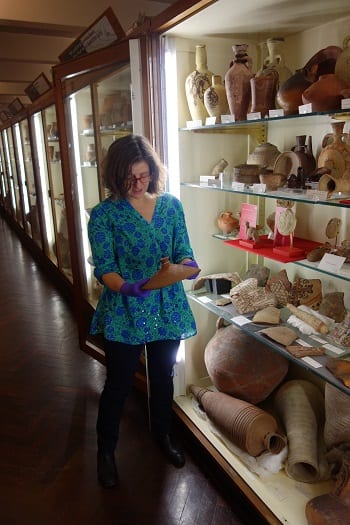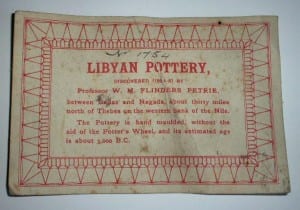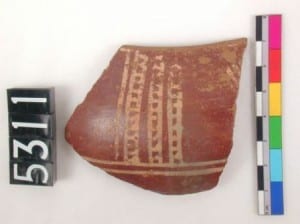Guest blog by Mary Ownby and Bettina Bader
In the third in our series of different perspectives on Egyptian pottery Mary Ownby, Petrographic Researcher at Desert Archaeology Inc, and Bettina Bader, Institut für Ägyptologie der Universität Wien, investigate the purpose of vessels that Egyptologists find puzzling.
Analysis of Egyptian pottery provides great insight into how the Egyptians worked, ate, carried out religious activities, and related to the larger social and economic system. For most vessels, their shape can inform on their use, i.e. a jar is probably for storage, a large pot with a narrow opening for cooking, and bowls and plates for serving food. The location where ancient pottery has been found can also inform on how it was used, for example in an oven, or as ritual implements in the burial. In Egypt, depictions on tomb and temple walls as well as some texts also tell us about the variety of purposes ceramic vessels were used for. Thus, most ancient Egyptian pottery has a fairly clear use in the past.

Pots being put to good use. Bread making scene from the Old Kingdom Tomb of Ti at Saqqara.
(more…)
 Close
Close






